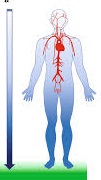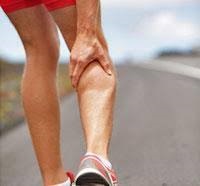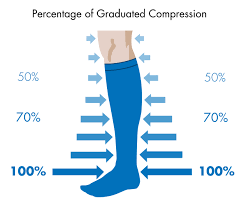Pressure Stockings for a Healthier Venous Life
Venous insufficiency in your lower extremities can be unnerving to say the list. From circulation issues to edema and varicose veins, nobody has the time to endure such unnecessary havoc while juggling life’s demanding responsibilities. The all-time solution to evading lower leg problems is pressure stockings; this compression gear is the motherload of lower leg venous circulation blessings.
Pressure stockings are designed to improve venous circulation (the source of most lower leg difficulties) and prevent the development of conditions that contribute to venous insufficiency. The stocking has features that enable it to function with precision in eliminating problems that result from venous insufficiency in your legs.
Your veins are responsible for returning blood back to your heart; this part of the circulation is known as the venous return. The flow of blood in your veins works against physiological and external interferences. Under normal conditions, your body overcomes these obstacles. A healthy individual is able to walk, run or move creating forces that overcome the hydrostatic pressure that impedes blood flow in your lower legs.
Normal Physiological Obstacles that Affect Circulation in Your Legs

Venous circulation in your lower limbs prevails over a lot of hurdles to reach the heart. If the obstacles are not overcome, the risk of clot development (thrombosis), edema, circulation difficulties, leg swelling and soreness is significantly increased. It is because of these impediments that compression socks have become a necessity for venous insufficiencies.

It is important to note that the risks of lower leg circulation maladies only increase under conditions like sickness, recovery and sedentary living; otherwise, when you have a healthy routine in regards to movement, your body is capable of overcoming every hindrance naturally. However, when your health is compromised, compression stockings can be used to stand in the gap and aid in circulation.
The Nature of Veins

The nature of your veins complicates circulation in your lower legs by being accommodative of pressure and volume changes. Your veins will expand and regulate pressure when blood volume increases. The problem with this vein property is blood volume usually increases in your lower legs because blood collects at the bottom of your feet due to external and internal factors. It is this stagnation that increases the susceptibility of clot formation in your lower legs.
Popular Articles on ComproGear
Best Compression Socks for Elderly Easy to Put on Compression Socks for Elderly
Plus Size Compression Socks XXXL Compression Socks
Best Compression Socks for Ankle Swelling Compression Socks for Swollen Ankles
Best Compression Socks for Sitting All Day Should You Wear Compression Socks if You Sit All Day?
Medical Compression Socks Best Compression Socks
What Level of Compression Socks Do I Need? Compression Socks mmHg Guide
Best Compression Socks for Nurses Nursing Compression Socks
What are the Best Socks for Circulation? Best Socks for Poor Circulation
Compression Socks for Edema Best Men’s Compression Socks for Edema
Compression Socks for Swollen Feet Compression Socks for Swelling
Compression Stockings mmHg Chart Compression Socks Pressure Chart
Super Plus Size Compression Stockings Compression Socks for Obese Legs
Distance

The (long) distance between the heart and your lower legs is an obstacle to circulation. The problem is the exchange of nutrients and metabolic waste between your leg tissues and blood vessels occurs through passive diffusion. Passive diffusion is only practical over short distances.
The cardiovascular system counters the pitfalls of passive diffusion through bulk flow where blood volume is increased in the blood vessels of your lower regions impacting the pressure dynamics in the blood vessels that are directly in contact with the body tissue to facilitate diffusion.
However, external factors such as gravity cause blood to accumulate in your lower legs when you are immobile, inactive or incapacitated for a long duration. Under such conditions, pressure stockings are indispensable.
Pressure
The pressure level in your veins is another deterrent affecting the venous return. Pressure in your veins is usually lower compared to arteries and capillaries. Arteries receive blood directly from the heart; this blood gushes out of your arteries with force generated by your pumping heart.

However, by the time the blood is exchanged to the smaller capillaries then passed on to the veins, the original force acquired will have significantly reduced. The low pressure heightens the likelihood of clot formation in your veins.
Gravity

Gravity affects circulation because it works against the direction of the venous return flow. Gravity’s impact is mostly felt in your lower limbs; this force pulls blood down making it difficult for your heart to pump blood in your veins. In times of prolonged inactivity, clots and edema develop because of blood stagnation enhanced by gravity. Pressure stockings provide a force that exceeds gravity’s hydrostatic force in your veins enabling blood to flow.
The Conditions that Warrant the Use of Pressure Stockings

Since the upheavals of life always interfere with your wellbeing, having pressure stockings is almost inevitable. Compression stockings come in handy in many health- and lifestyle-related leg circulation pitfalls. They prevent and slow down the development of clots, deep vein thrombosis, edema, muscle soreness and pain, delayed onset muscle soreness and venous ulcers.
Compression stockings are a preventative solution for venous insufficiency. By improving blood flow in your leg veins, the hosiery averts the advancement of acute illnesses.
Typical Conditions that Require the Intervention of Compression Stockings
Muscle Weakness
Muscle weakness limits the flow of blood back to the heart from the legs. Muscles are pivotal for blood circulation in your lower extremities. By contracting and relaxing, muscles put pressure on your veins causing them to constrict, in the process, blood flows up to the heart. If you have muscle weakness, your doctor will recommend compression stockings as part of your treatment regimen to aid in producing pressure for the blood.

Heart Anomalies
Heart diseases also affect circulation because the heart produces the force through its pumping mechanism propelling blood to flow. If the heart has a defect or its function is limited by illness, it will not generate the needed force to pump blood; this increases the risk of thrombosis. Compression stockings are used alongside other medical interventions to maintain continuous blood flow.
Pregnancy

Pregnancy increases the risk of edema, varicose veins, deep vein thrombosis (DVT), heaviness and tension of the leg. The risk factor is augmented because of increased body fluids (blood volume) to accommodate the wellbeing of the mother and child. Additionally, the expanding uterus and pelvic veins also affect the venous return in the lower legs. The excess weight pressurizes your legs distorting the normal flow rate of the venous return.

Another reason why pregnant women suffer from leg issues because of poor circulation is due to increased levels of progesterone in the system. Progesterone (a hormone needed to regulate pregnancy) causes your veins to relax; this relaxed state causes blood to pull downwards because of gravity.
Pregnant women need compression stockings to normalize the pressure and blood volume in the leg veins and prevent or reduce the effects that the pregnancy physiological state aggravates. The physiological changes left an attended are detrimental to the health of the mother-to-be and the unborn.
Prolonged Periods of Standing or Sitting

Clot formation in your legs is triggered when you sit or stand for long periods of time. For people in professions such as nursing, where the job description entails making multiple ward rounds or the typical office jobs where you are confined to a sit the entire day, the possibility of developing clots or edema is enormous.
Leg swelling and soreness or edema can also develop from sitting for a long period due to traveling. Patients recovering from surgery are also susceptible to leg inflammation and clot development. When your treatment period leaves you immobile for a long time, the chances of developing clots, edema or DVT are elevated. If you find yourself in these situations then having pressure stockings becomes a necessity.
Strenuous Exercise

Pressure stockings are also important for people involved in intense workouts and/or training. Every sportsperson, trainer and healthy living fanatic are aware of sore and painful muscles. Common injuries from intense workouts include muscle cramps, the calf and Achilles strain, as well as shin splints. Strenuous workouts also cause delayed onset muscle soreness which occurs days after the arduous activity is over.
All these conditions are caused by poor circulation; where demand for blood by the tissues in your lower legs exceeds supply. In intense exercising, the need for blood increases because your leg muscles require oxygen and nutrients to function. At the same time, there is a build-up of metabolic waste that needs to be removed rapidly. Failure to meet these demands leads to muscle soreness and pain.
Pressure stockings rectify this situation by maintaining a continuous flow of blood. The hosiery puts pressure on your veins creating a suction effect that maintains a steady flow of blood. The flow ensures metabolic waste is removed facilitating rapid muscle healing.
How Pressure Stockings Work

Compression stockings constrict your veins to increase pressure and create a suction effect that enables continuous blood flow. Improved blood flow reduces the risk of developing clots, DVT, edema, muscle soreness and pain as well as swelling in your legs.
The stockings have special features that perfect blood flow in your lower legs.
Compression Levels

The stockings come in different compression levels measured in mmHg (read us millimeters of mercury) because they provide external pressure to your veins. The pressure levels are expressed as ratios denoting the magnitude of the pressure acting on the stockings. The pressure levels range from 10mmHg to 60mmHg.
There are three standard pressure level ratios; 15-20mmHg, 20-30mmHg and 30-40mmHg. The Higher number in each ratio represents the highest pressure level while the lower number indicates the lowest pressure level in a stocking. Your doctor will recommend the compression level most suitable for your condition.
- 15-20mmHg pressure stockings are effective for mild leg conditions such as swelling and soreness from traveling.
- 20-30mmHg compression stockings are the first medical grade gear ideal for pregnant women, recovering muscle injuries and edema
- 30-40mmHg pressure hosiery is medically categorized as second grade; this high-pressure level hose is ideal for severe leg vein conditions such as DVT and venous ulcers.
If your thrombosis or edema is worse or recurrent your doctor will prescribe stockings with stronger compression levels. Patients recovering from surgery use lower-level pressure hosiery (less than 15mmHg) because the stockings are only required to prevent blood clots during the recovery period. Your physician determines the compression level suitable for your condition.
Graduated Compression

Pressure stockings have varying degrees of compression within the length of the hosiery. The pressure is strongest on the feet and more relaxed as you move along the length of the stocking. The differences in pressure create the needed suction effect that pulls blood to your heart.
Length

The stockings come in different lengths: knee-high, thigh-high and full-leg hosiery. Knee-high stockings work on your feet, ankles and calf. Thigh-high stockings, on the other hand, work on the lower leg and thighs as well. Full-length hosiery work on the pelvic regions in addition to the entire leg.
Types of Pressure Stockings

Although the mechanism of action is the same in all compression gear, there are different types of compression stockings suitable for each condition. For instance, maternal pressure stockings are not the same as anti-embolism pressure stockings given to patients recovering from surgery. Furthermore, the mechanism of use is also different.
Pregnancy compression stockings are worn as soon as the day starts. You don them once you get out of bed and remove them as soon as you get back to bed. The purpose of this pressure stockings is to prevent clotting, edema, leg swelling and soreness during pregnancy.
Anti-embolism stockings, on the other hand, are worn in bed. Furthermore, their pressure levels are lower compared to pregnancy pressure stockings. The purpose of both types of pressure stockings is different; therefore, their manner of use also differs.
Choose the Compression Stockings that Suit Your Condition

Choosing the right pressure stockings is the first step toward enjoying the benefits of the hosiery. The correct sock should have a compression level suitable for your leg problem. It should also fit your leg perfectly. Before purchasing your pressure stockings, consider the features of the stockings in light of your condition because not all socks are meant to treat leg circulation issues.
It is important to consult your doctor before purchasing your compression stockings. Additionally, you should adhere to the instructions concerning the use of the stockings for a better outcome. If the instructions restrict wearing the pressure stockings in bed, do not wear them in bed. All compression stockings should not be folded or pulled down. Compliance with the instructions is key to improved leg circulation.
This page last updated December 14, 2022
